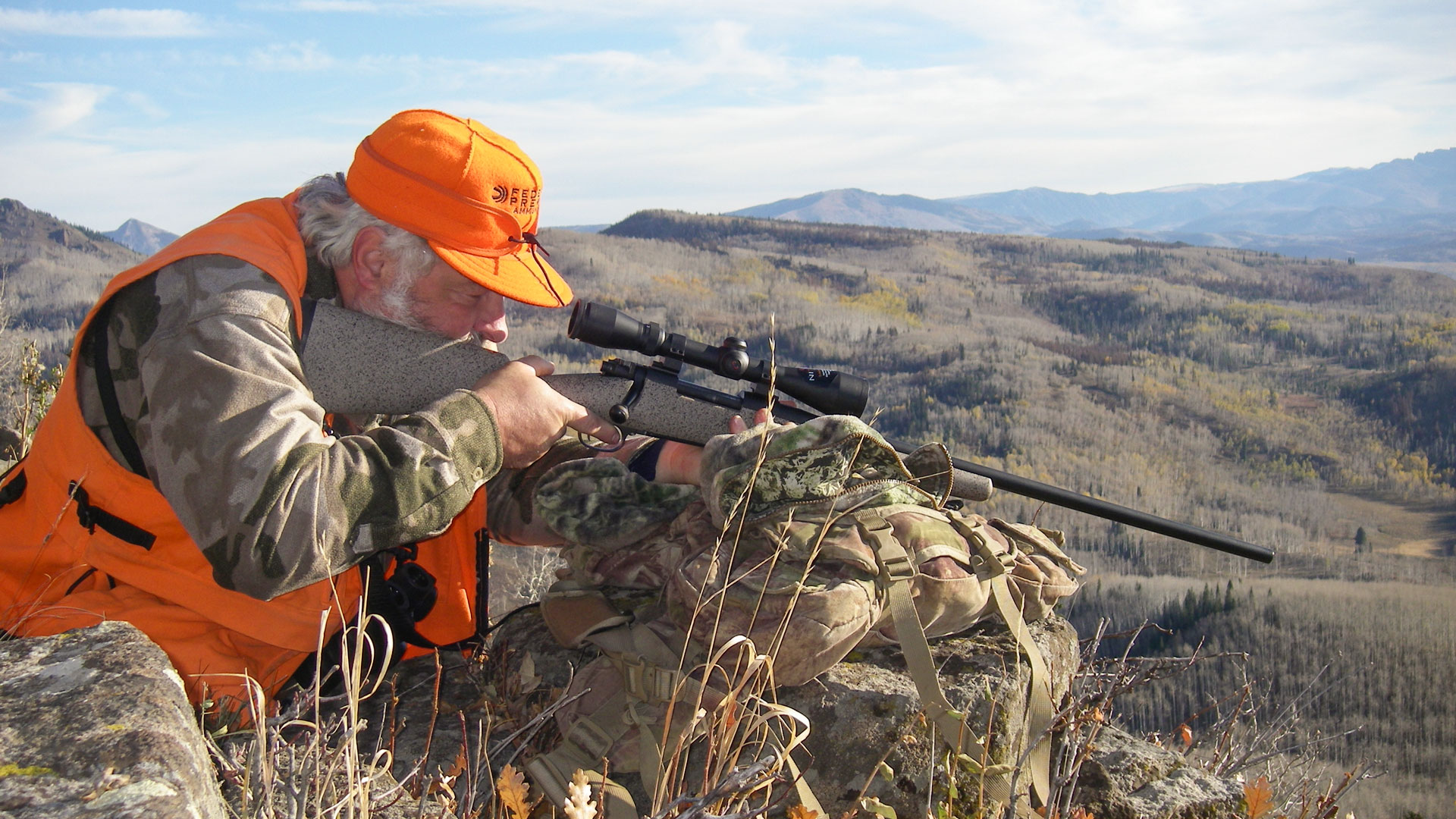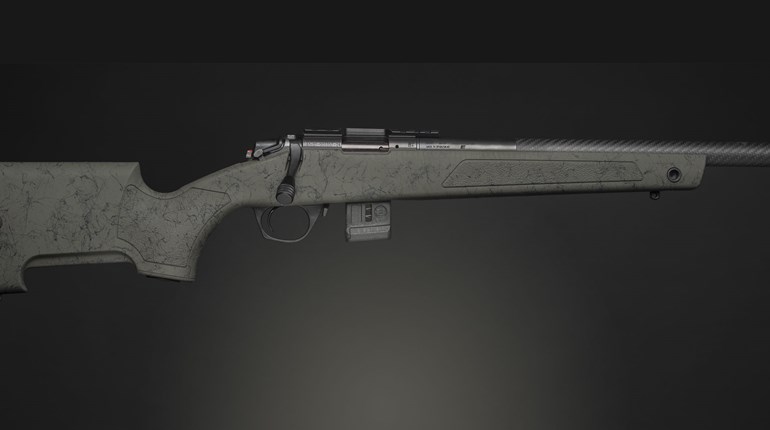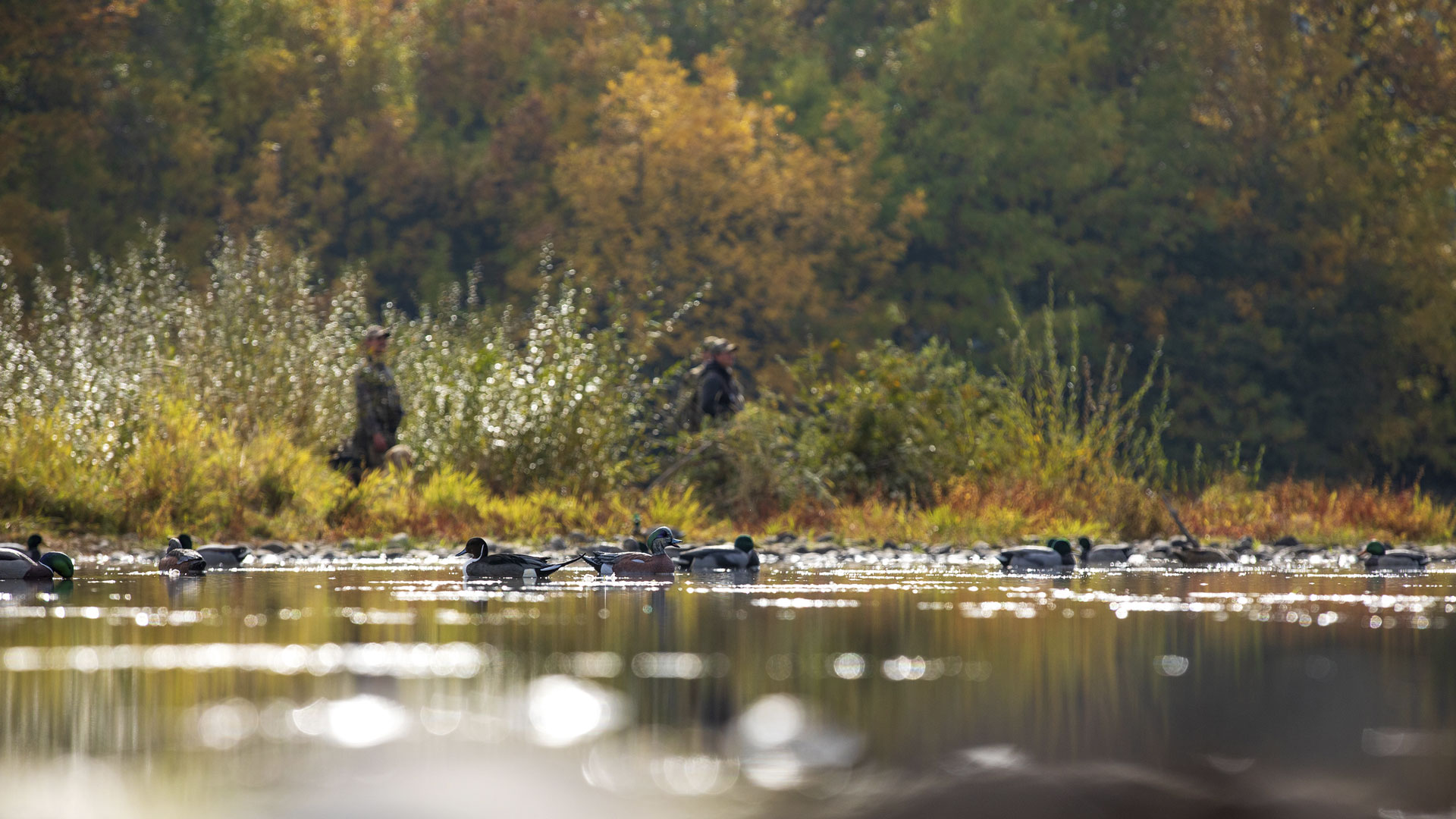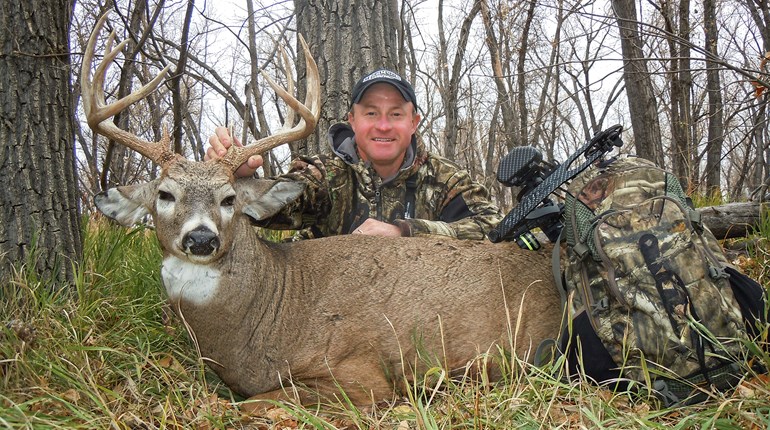
There seems these days to be a “race to the bottom” among hunters who like to hunt and shoot long with smaller and smaller cartridges at greater and greater range. The practice ignores sage advice.
Indulge me a bit as we wander down a dark road that is not often traveled in the world of hunting writing ... .

Although it was cool when he shot, the South Texas day had turned incredibly warm. I got back to the truck around noon, exhausted and badly dehydrated. My legs were rubbery and I had a pounding headache. The shooter was sleeping in the back seat. I had spent the last several hours walking miles and miles, hoping to fix his mistake. I was giving up my own hunting time and he had been napping the entire time.
He wasn’t a bad guy, but at that moment I was furious. This was the early years of long-range hunting and he was, as they say in the South, “ate up with it.”
His .308 Winchester was too small for nilgai, but he could not be dissuaded. His foolish insistence on a long shot or nothing, was unethical, unnecessary and just plain stupid.
He took the head-on shot at a bull at long range, even though the bull was heading his way and closing the distance. The bull fell but got up and ran off. We found blood, but not the bull. Some of us worked pretty hard at a recovery.
“It’s OK,” he said during the ride back to the lodge. “My goal was to hit one at long range and I did that. I am happy.”
I wasn’t. But I was a guest, so I held my temper.
This illustrates a dirty little secret about long-range hunting—wounding loss and how it’s ignored. I think the problem is escalating. Many of these forbidden stories have a common theme. The shooter is out to prove something and more often than not is using an inadequate cartridge at much too great a distance.
I have been writing about the “new” fad of long-range hunting since at least the early ’90s. Clearly it is no longer new and has become part of the culture. But if we (yes we, I am part of this, too) are going to extend our ethical shooting ranges, we should at least try to eliminate the variables that are within our control.

The great Robert Ruark wrote a best-selling novel back in the ’50s. The gist of it was that if you are going to give up long accepted norms, then you must replace them with something of value (also the title of the book).
I might say the same about today’s hunters. Don’t give up well-established guidelines unless you have something better to replace them.
The long accepted ballistic “norms” are not wrong. They were formed from the combined experience of decades of hunting with thousands of hunters. Yet, the trend today is to disparage them to justify the move to smaller and smaller cartridges. And the trend is also to shoot farther and farther.
It’s often lost in this discussion that a living animal is involved. Our goal should always be a fast, clean kill. Using inadequate cartridges at insane distances, all for bragging rights, is immoral.
Don’t bother telling me about the new bullets. I was part of the beta testing with a lot of them. The new generation of hunting bullets is fantastic, the best in history. But a bullet cannot change the laws of physics. It also can’t perform magic. It still needs horsepower behind it to do its job. We should consider a bullet’s improved performance as insurance, not a solution.
One of the variables we can control is the cartridge and bullet used. There has been a long-accepted agreement that, as a guideline when using a rifle, deer-size animals require 1,000 ft.-lbs. of energy and elk-size critters need a minimum of 1,500 ft.-lbs. on impact. (Nilgai probably need more than that!) Nobody is sure who came up with those figures, but much of today’s Internet-driven generation is certain they are all wrong. Yet, they offer nothing of value to replace them.
Sure it’s flawed. But until somebody comes up with something better, it’s the best we have. The cynics love to cite examples of shooting game with less powerful cartridges. No argument, smaller cartridges can and will kill game. But what does it prove? There are stories of killing an elephant with a .22 Long Rifle. Does that make it an elephant gun? Bella Twin killed a record book grizzly with a single-shot rifle and .22 Long ammo. Does that make it a grizzly gun? If you think yes, please let me watch you try. I know a guide in BC who poached a lot of moose with a .22 LR. Does that make it a moose gun? Using the logic being applied by a lot of folks on social media I suppose it does. After all, it killed the moose.
We must have a way to measure things and guidelines to go by. The critics disparage those long-established norms, but they offer no viable alternative.

Until they do, I think that 1,000 ft.-lbs. for deer-size game and 1,500 ft.-lbs. for elk-size on impact remain valid. But only if they are used in context. When they were established it was assumed that a proper rifle cartridge with a large enough bullet would be used. That still applies. Never more so than when we shoot at long range.
That brings up an often-ignored factor: bullet penetration. There are other factors, but it takes bullet weight to penetrate well. Why is it important? Some say as long as the bullet reaches its intended target it’s enough. That moose poacher I know would shoot them in the heart. The bullet would make it to the heart, usually lodging there. He would follow the moose until the disturbed heart went out of rhythm sometime later. Then he would move in and dispatch the moose. Using some of the logic being spouted, the bullet reached the heart, so that is enough penetration. We know it is not. The bullet must do enough damage as it passes through. One way to ensure that is to keep the bullet velocity high as it penetrates through the game. The velocity creates more tissue damage.
Another point is that today’s pointed bullets usually make a very small entry hole. With low impact energy, exits are whimsical and often the blood trail is skimpy at best. That’s what happened with that nilgai.
This is all compounded if we are going to shoot at long range. Any bullet starts slowing down as soon as it leaves the barrel. The new cartridges and long-range, high ballistic coefficient (BC) bullets have mitigated this loss a bit, but physics still apply and any bullet will lose its energy faster and faster as the range extends, often shedding half its energy or more before impact. The only thing that matters is how much energy the bullet is carrying on impact.
The old adage of “leave the bullet in the carcass and dump all the energy” is flawed. An exit with lots of velocity remaining will provide a larger wound channel the entire length of the bullet’s path, doing more damage than one that slows and stops. It will also make a larger exit hole.
The context thing. My somewhat arbitrary personal guidelines state that in addition to the energy guidelines, a long-range big-game hunter should use a high-quality, modern big-game bullet that weighs at least 130 grains with a diameter of at least 6.5mm. If the distance is stretched out much, or if the game is larger than deer-size, I prefer more weight and a diameter of at least 7mm or .30 caliber. For the big stuff, a .338 bullet is not a bad way to go. Velocity, of course, should be high enough to meet the energy standard on impact.

External ballistics, what happens to the bullet in flight, is often forgotten or ignored. It was shown to me (again) in stark contrast when I traveled to northern Pennsylvania with my friends Jon LaCorte and Jon Allen, the owners of Tract Optics. We spent two days at Bob Raimo’s Shooters Gauntlet range trying to wear out a truckload of guns. This impressive shooting facility has several ranges for long-range shooting. The one we shot on has steel targets all the way out to 1,220 yards. For two days we shot hundreds of rounds with a multitude of rifles ranging from 6mm Creedmoor through .375 CheyTac. That included a .300 Winchester and a .338 Lapua as well as all the usual lesser suspects for long-range shooting.
Tract Optics is an optics company started by two former Nikon employees with a combined 50 years of optics experience. They have an Internet-driven, direct-to-consumer sales model that delivers high-quality optics at lower prices, because there is no middleman. The Jons are hunters and long-range shooters themselves and they know what works. I have been using Tract optics since they came out and find them to be some of the best on the market. Tract has ultra-clear optics and extremely dependable mechanics that track well when dialing. Don’t let the price fool you, these are some top-shelf optics. I have them on several hunting rifles as well as multiple precision rifles for long range. My experiences with them have all been positive.
During our time in PA, we of course used all the long-range tricks, practicing both dial-up and holdover techniques. (I learned again that dial-up is much more precise.) Any time you can send bullets at targets far, far away you learn things about shooting. This time I wanted to also see what impact cartridge and bullet selection have at long range. Of course the bigger guns hit much harder, but is there also a difference in the ability to hit what you are shooting at?
It turns out there is! It goes back to the earlier theme that’s been known for a very long while with serious shooters, yet often ridiculed and disdained of late by keyboard shooters. Put simply, bigger, heavier bullets stay the course better. We also learned that as a result they are more predictable for a much longer distance than small, lightweight bullets.
Once the wind picked up, the smaller cartridges and lighter bullets were more and more unreliable in terms of hit predictability at distance. Yet, when we were shooting the larger cartridges and heavier bullets we didn’t see this degree of inconsistency. The distance varied with conditions, but the phenomenon remained steady and predictable.
Sure, the wind blew all bullets off course, but we could predict the point of impact with more precision and consistency when using the larger bullets and more powerful cartridges. Not necessarily faster, as velocities remained similar between cartridges, but more powerful with bigger bullets. A bigger motor, so to speak. The bigger cartridges simply performed better than their lesser brethren as the distance increased. When shooting modern design, heavy-for-caliber, high ballistic coefficient bullets the impact became even more consistent and predictable.
Of course, the big stuff will hit harder too. That is just simple physics. But watching those bullets hit steel targets really illustrated the difference. Little bullets would ring targets, but big ones made them dance and sing.

Only you will know your maximum ethical range at which you are confident about shot placement under hunting conditions. So the cartridge choice will be dependent on the energy remaining at your chosen maximum distance. Just remember there is only one measure of dead, but lots of degrees of wounded. I much prefer to err on the side of too much rather than not enough. I detest the idea of trying to “prove” something with a little cartridge and/or shooting at extended ranges so you can brag.
I am not advocating using a .460 Weatherby for deer as some will no doubt try to claim after reading this. I am advocating that you look at what’s been accepted for decades and follow those guidelines.
As proof that I do as I say, in the fall of 2023 I hunted in four states with a Savage Impulse Mountain Hunter rifle in 7mm PRC. Time will tell, but I am thinking that this new cartridge from Hornady may well be the ultimate long-range deer cartridge. That rifle is extremely accurate, and with Hornady 175-grain ELD-X ammo and a Tract Toric 2.5-15X scope it was as good as I could expect in terms of equipment for open country. The bullet carries 1,000 ft.-lbs. of energy to well past 1,200 yards, which is a hell of a lot farther than I would ever shoot at game.
With this setup, I was as ready as I could be for the wide-open hunting grounds of the Midwest, which is where I started my deer season.
There were opportunities that in hindsight I should not have passed. I made the classic mistake of not shooting a buck very early in a hunt that I would have not hesitated to shoot a few days later. He was inside my personal range limit, but it was only minutes into the season and I let him walk. There were very big deer seen earlier on the property and you don’t get them by shooting a “smaller” (145-class) buck the first morning. Or, as it turned out, sometimes you don’t get anything at all. As a trophy hunter I accepted that possibility. (I just didn’t expect it)!
It was not my most successful year. The only shot I fired at deer, two months and many hunting days later, I laser ranged at 53 yards.
In short, if you must shoot game at long range, don’t get caught up in this little cartridge race to the bottom. If you are serious about long-range hunting, take Robert Ruark’s posthumous advice as I did all fall and bring enough gun.






































